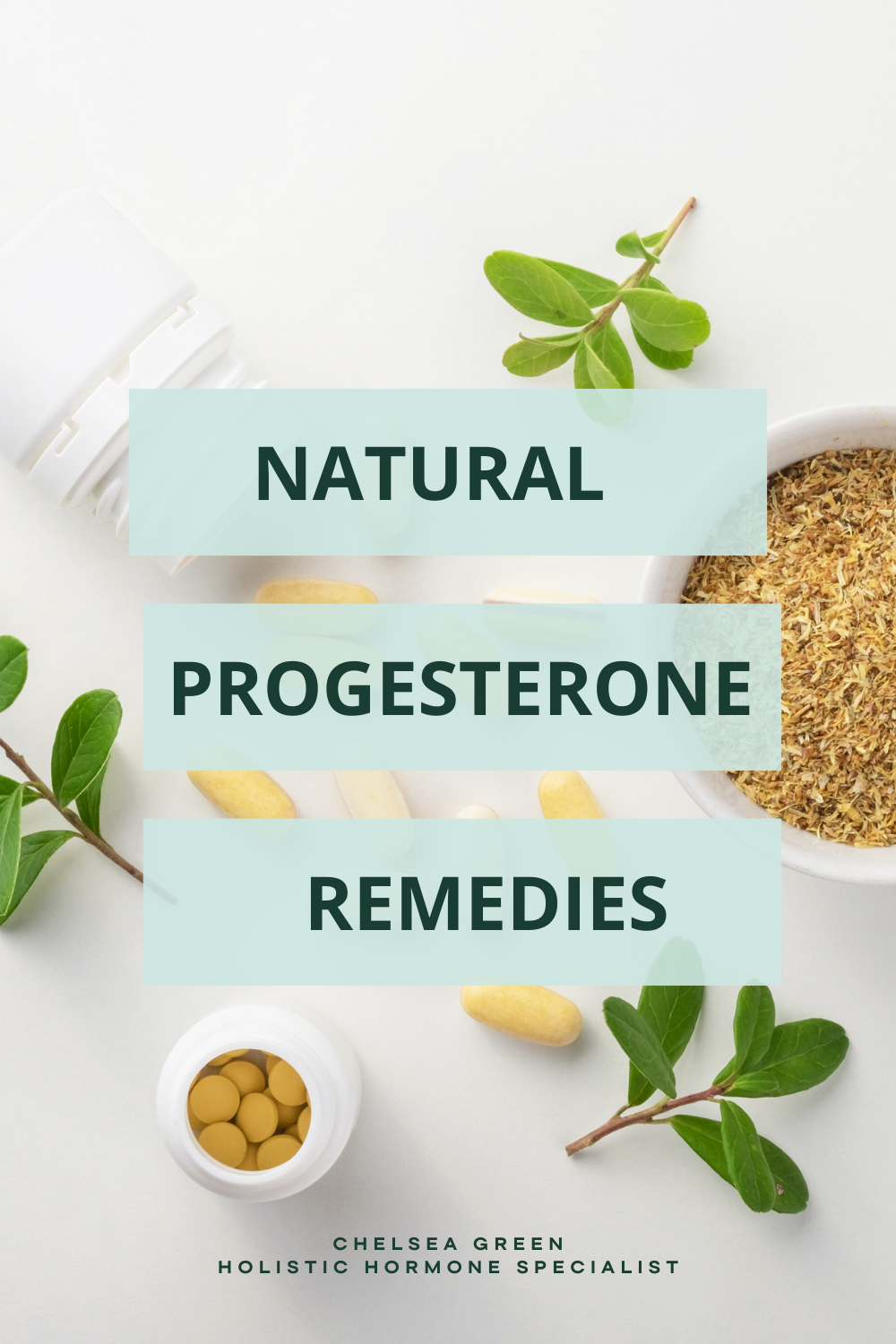Perimenopause can be a tumultuous time with symptoms ranging from night sweats, anxiety, and heavy periods to hormonal headaches and sleep issues. A lot of that has to do with the fact that progesterone falls, very quickly, off a cliff. Reducing stress and eating well can help together with herbs and supplements. In this blog, I am sharing my favourite supplements to boost progesterone levels in perimenopause.
** Progesterone Series: Boosting Progesterone Levels in Perimenopause **
This is the third blog I am doing in a series on boosting progesterone naturally in perimenopause. If you have missed the first two blogs, you can grab them here: 4 Signs of Low Progesterone and Increase Progesterone Naturally with Food
Supplements to Boost
Progesterone Levels in Perimenopause
Magnesium
Magnesium is a key mineral for all hormone regulation. It regulates the pituitary gland – the pituitary gland is the master gland when it comes to hormones – it’s like the conductor in the orchestra. And so the health of the pituitary gland plays a vital role in progesterone levels.
But more importantly, one of the things that will drastically reduce progesterone is stress. We live in a very stressful world; we overschedule ourselves and don’t allow time for relaxation. This results in excess stress hormones which comes at the expense of progesterone production. And in that stressed state, we burn through magnesium so we need extra support. Additionally, magnesium helps to calm the nervous system, improve anxiety, and sleep and it can be very useful for hormonal headaches all of which we see with low progesterone.
Ashwagandha
Ashwagandha is an adaptogen herb. Adaptogen herbs help to lower cortisol levels and allow us to be more stress resilient – something we lose in the peri-to-post menopause years. So Ashwagandha helps to lower stress and normalise cortisol levels which promotes better progesterone production.
Ashwagandha has also been shown to improve sleep, anxiety and the health of the thyroid – the health of the thyroid and progesterone production are linked.
Maca
Maca, like ashwagandha is an adaptogen herb and so helps with stress levels, but it’s also a phytoestrogen. When progesterone falls in perimenopause, we naturally end up in a state of oestrogen dominance and phytoestrogens like maca can help to balance oestrogen levels. It can be very useful for oestrogen-dominant symptoms like heavy flooding and painful periods, breast tenderness and PMS that you see when progesterone is out of balance with oestrogen. Additionally, it is great for energy, libido and night sweats which can become an issue in a low progesterone state.
Agnus Castus
Agnus castus (chaste berry or vitex) is known for supporting progesterone by regulating luteinising hormone production. Luteinising hormone regulates ovulation and the release of progesterone and agnus castus promotes healthy luteinising hormone levels. It is particularly useful for low progesterone symptoms like PMS, short cycles, heavy periods, low mood and breast tenderness before the period.
White Peony
White peony is commonly used in traditional Chinese medicine for types of low progesterone symptoms: infertility, ovarian failure, and androgen excess and perimenopause. Paeonia has been shown to positively influence low progesterone, reduce elevated androgens and modulate oestrogen and prolactin. NB: This herb is not used one it’s own – in TCM, Paeonia is always used in combination with other herbs.
Homeopathy for Low Progesterone
These are three of my most used remedies for women over 40 struggling with symptoms of low progesterone.
Sepia
In a healthy state a Sepia woman has loads of energy, does everything for everyone, she is very caring. But in an unhealthy state, she is worn out and indifferent to everyone and everything – she is particularly irritated with her partner and children – and she wants to be left alone and dreams of escaping. At menopause, her periods can become heavier and painful and the pains are dragging pains. She might get breast tenderness, backache or weakness in the small of the back night sweats before the period. Everything is worse before the period and better once the period starts.
Pulsatilla
Pulsatilla wants to be loved and cared for and is mild and yielding and tearful until she is not, and then she is Pulsatilla-the-Hun. Everything with Pulsatilla is changeable – there can be tears and laughter in one day, the period may be irregular, and the flow can be changeable. They tend to be very tearful before the period and better for consolation.
Cimicifuga
Cimicifuga is black cohosh and covers sadness, depression, a feeling as if there was a black cloud over everything, dread, and a fear that something bad will happen. Periods are heavy and painful with the pain travelling down the thighs and into the back. The pains can be very severe, like labour pains and the more flow, the more pain. It covers hormonal headaches as well as joint pains and muscle tension.
In homeopathy there are thousands of remedies, these are just three that I often prescribe in perimenopause. So, if these remedy pictures don’t resonate with you, don’t despair, there will be a remedy for you.
So, these are some ways you can boost progesterone with supplements. But as with all hormones, you must take a holistic approach, you can’t just take a supplement and carry on as normal. I will be talking about this in my next blog, so make sure you check that out. Alternatively, subscribe to my YouTube channel and get the advanced notification of the series.
Chelsea xx
P.S. If you need some help with your hormones, book a discovery call and see how we might be able to work together to ensure you feel like yourself again.


